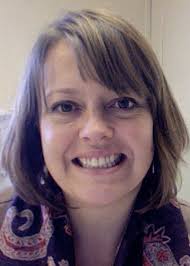My attendance at HippoCamp 2018 put the final nail in the coffin of any remaining intention on my part to write in a traditional academic style. I was never terribly prolific as an academic writer, even with the pressure of the “publish or perish” cycle in my full-time position as an anthropology professor, but I did manage to write one book (The Moroccan Women’s Rights Movement, Syracuse University Press, 2014) and a few journal articles.
Looking back, I can see that I’ve gained some important takeaways in my switch from academic writing to creative nonfiction writing, referred to from here on as AW and CNF:
- CNF allows me to experiment with one-, two-, and three-syllable words as well as three-plus-syllable words:
- AW: interstitial, lacunae, and congeries
- CNF: between, gaps, and groupings
- With CNF, I can express simple, universal ideas without reference to big name scholars:
- AW: The moon rose brightly behind the dark shadow of the woods (Luna, Mond, and Lua 2017, Schein 2015a, Moon Goddess Collective 2012).
- CNF: The moon rose brightly behind the dark shadow of the woods.
- Now I can encourage people to read my entire work because I think they will enjoy it and benefit from it:
- AW: Mom, don’t even think about reading the intro; it’s so boring and theoretical. As a matter of fact, skip Ch. 1, too. Start with Ch. 2, and then there’s a section on pp. 1,435-1,436 that you’ll really like. You know what, Mom, come to think of it, I’ll just tell you some of the highlights.
- CNF: Mom, I wrote a book about some women I met in Morocco – read it and tell me what you think!
- With CNF, writing “emotionally” can add to my credibility in the eyes of the reader:
- AW reader: The writer seems quite heartbroken by the pain of this woman’s divorce; I think she’s lost her scholarly objectivity.
- CNF reader: Wow, I can feel the pain of this woman’s divorce. What a talented writer!
- Call me crazy, but I also hope that CNF can make me a little bit more money:
- AW writer: Grrr, I just got a royalty check on my book for only $50!
- CNF writer: Wow, I just got a royalty check on my book for $65!
- In CNF, humor is appropriate. For example, here I tried using the oversimplification technique taught to me in the “Humour Makeover” workshop at HippoCamp 2018, with Amy Fish and Lara Lillibridge. Was it funny? Well, if not, I’m new at this; there was no “Humour Makeover” training in graduate school!
In all seriousness, there is a place for academic writing, a conversation among scholars over time who are trying to build the very best possible interpretations and conclusions of their data. In all fairness, I should probably also give a nod to what I’ve learned about writing from academic writing and how we can apply that to creative nonfiction writing:
- Accuracy and details are important. In AW, I know that someone will read my work who knows more about my topic than I do—and that that person is probably going to be grumpy about any errors of fact or missing details. If our CNF serves primarily to inform our readers or convey something important to them, we owe them nothing less than well-researched accuracy.
- Similarly, word choice matters. Of course, we know this instinctively no matter what genre of writing we do. But here I mean that terms are important; in other words, I must get terms and jargon right. AW is too jargony, but some CNF may not be jargony enough. We have to know our stuff, including using the appropriate language related to our topic.
- Multiple perspectives must be accounted for. A work of scholarship is part of a long and ongoing conversation, and AW requires me to speak to the larger conversation or debate in which my argument fits. This can translate into CNF as a reminder to the reader that our story or experience is ours alone—and there are other stories and experiences out there that may differ substantially.
- Peer review is a necessary part of the writing process. I don’t like to share my work, mistakenly clinging to the hope that I can produce a perfect piece on my own. AW does not allow this: for every piece of work, I must undergo a rigorous review by my peers (who tend to be on the grumpier end of the spectrum). I find out, in detail, whether my work is already perfect (rare), so worthless that it shouldn’t be reconsidered even with vast changes (not uncommon), or worth a second chance through a revise and resubmit process (common). In order to avoid complete embarrassment in front of my anonymous peers, I voluntarily submit that work to friends and colleagues to get feedback before the official peer review process begins. In CNF, we also need to submit our work to peers who respect us enough to provide honest feedback.
As I move forward, I hope that even my requisite academic writing is as creative and compelling as possible. But I also hope that I can remember these and other lessons learned from my past life as an academic writer.
 Amy Evrard is associate professor of anthropology at Gettysburg College and the author of The Moroccan Women’s Rights Movement. She is currently writing a book using family stories to look at Southern history over the course of the 20th century. She also blogs about the relationship between humans and nature here.
Amy Evrard is associate professor of anthropology at Gettysburg College and the author of The Moroccan Women’s Rights Movement. She is currently writing a book using family stories to look at Southern history over the course of the 20th century. She also blogs about the relationship between humans and nature here.


